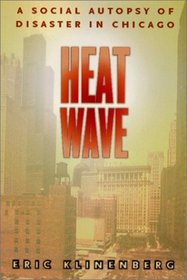Search -
Heat Wave : A Social Autopsy of Disaster in Chicago (Illinois)
Heat Wave A Social Autopsy of Disaster in Chicago - Illinois
Author:
On Thursday, July 13, 1995, Chicagoans awoke to a blistering day in which the temperature would reach 106 degrees. The heat index, which measures how the temperature actually feels on the body, would hit 126 degrees by the time the day was over. Meteorologists had been warning residents about a two-day heat wave, but these temperatures did not e... more »
Author:
On Thursday, July 13, 1995, Chicagoans awoke to a blistering day in which the temperature would reach 106 degrees. The heat index, which measures how the temperature actually feels on the body, would hit 126 degrees by the time the day was over. Meteorologists had been warning residents about a two-day heat wave, but these temperatures did not e... more »
ISBN-13: 9780226443225
ISBN-10: 0226443221
Publication Date: 7/15/2003
Pages: 328
Rating: 3
ISBN-10: 0226443221
Publication Date: 7/15/2003
Pages: 328
Rating: 3
4.5 stars, based on 3 ratings
Publisher: University Of Chicago Press
Book Type: Paperback
Members Wishing: 6
Reviews: Amazon | Write a Review
Book Type: Paperback
Members Wishing: 6
Reviews: Amazon | Write a Review
Genres:




